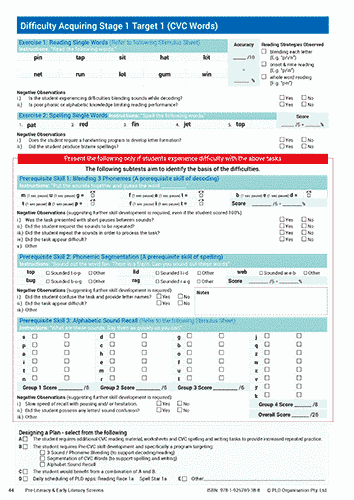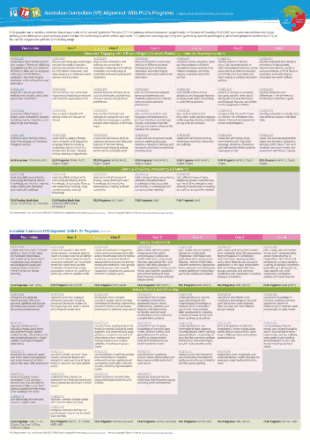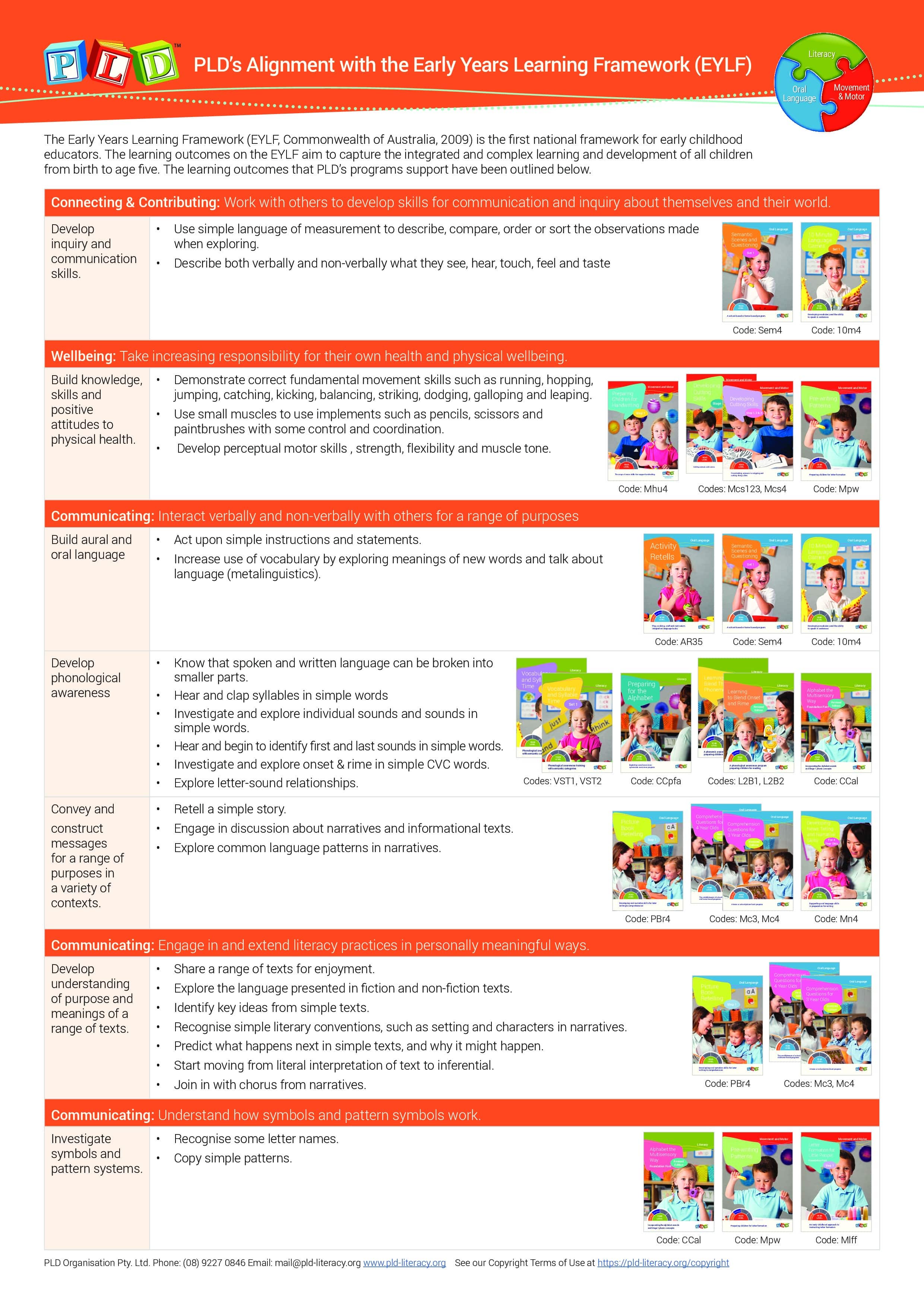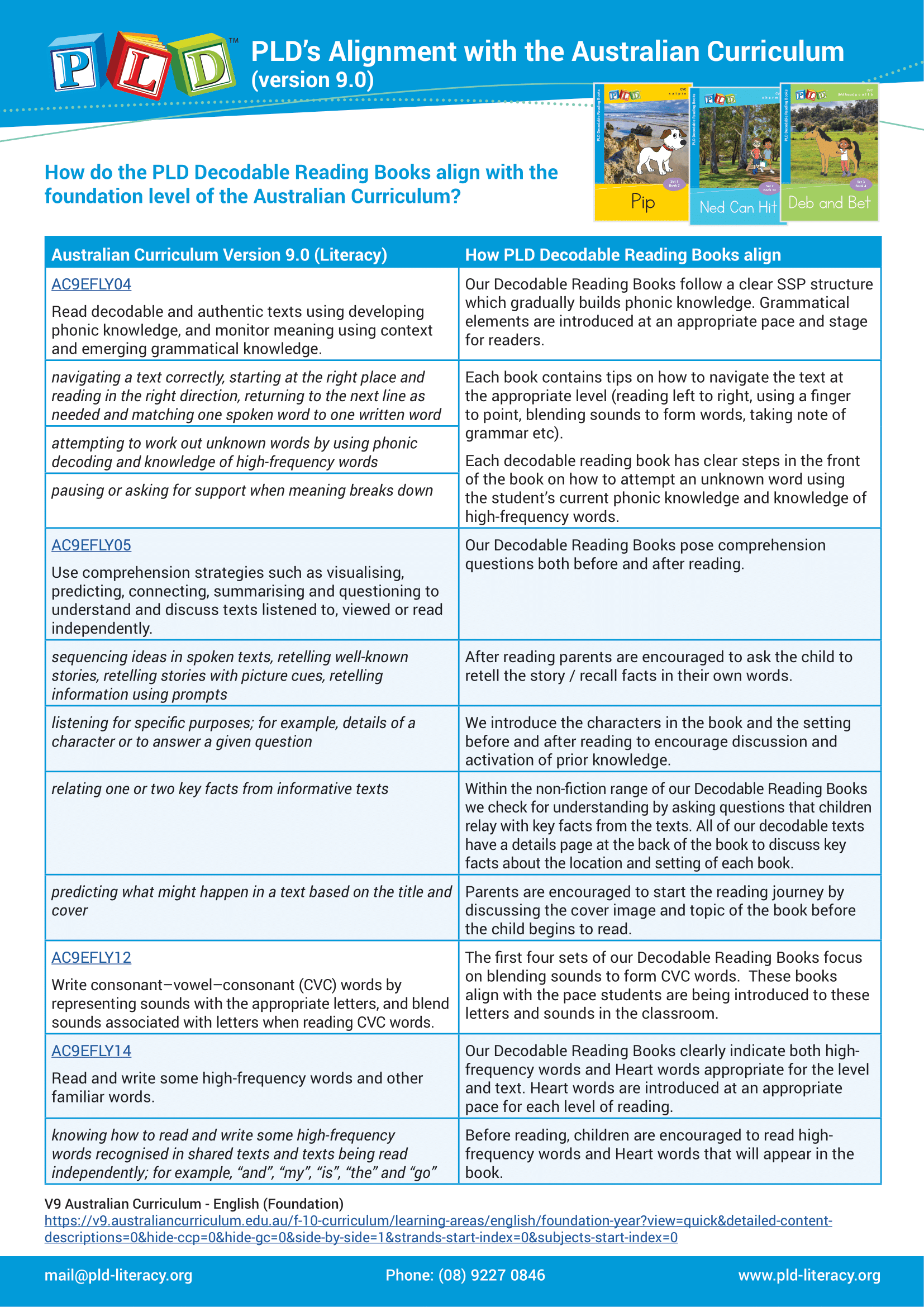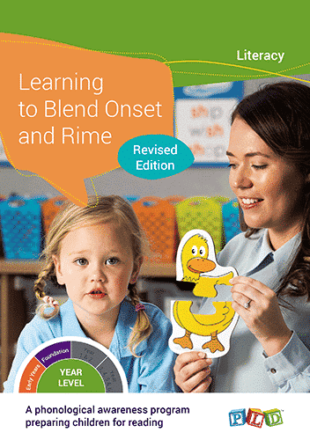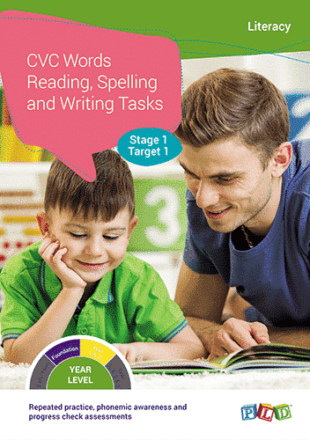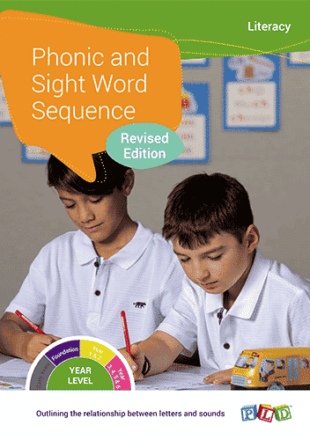-
Year 3, 4, 5 & 6 Screening & Tracking Manual
The Year 3, 4, 5 & 6 Screening & Tracking Manual outlines step-by-step instructions including what and when to screen, the materials required, time allocations and discontinue rules. We recommended that the screens are administered following a solid period of repeated targeted instruction as outlined in the Year 3, 4, 5 & 6 Teaching Sequence […]
The Year 3, 4, 5 & 6 Screening & Tracking Manual outlines step-by-step instructions including what and when to screen, the materials required, time allocations
-
Year 1 & 2 Screening & Tracking Manual
The Year 1 & 2 Screening & Tracking Manual outlines step-by-step instructions including what and when to screen, the materials required, time allocations and discontinue rules. We recommended that the screens are administered following a solid period of repeated targeted instruction as outlined in the PLD Year 1 & 2 Teaching Sequence Manual. In this way, […]
The Year 1 & 2 Screening & Tracking Manual outlines step-by-step instructions including what and when to screen, the materials required, time allocations and discontinue
-
Foundation Screening & Tracking Manual
The Foundation Screening & Tracking Manual outlines step-by-step instructions including what and when to screen, the materials required, time allocations and discontinue rules. We recommended that the screens are administered following a solid period of repeated targeted instruction as outlined in the PLD Foundation Teaching Sequence Manual. In this way, the screens function as a check-in […]
The Foundation Screening & Tracking Manual outlines step-by-step instructions including what and when to screen, the materials required, time allocations and discontinue rules. We recommended that
-
Early Years Screening & Tracking Manual
The Early Years Screening & Tracking Manual outlines step-by-step instructions including what and when to screen, the materials required, time allocations and discontinue rules. We recommended that the screens are administered following a solid period of repeated targeted instruction as outlined in the PLD Early Years Teaching Sequence Manual. In this way, the screens function as […]
The Early Years Screening & Tracking Manual outlines step-by-step instructions including what and when to screen, the materials required, time allocations and discontinue rules. We recommended
Assessments for Students Experiencing Difficulty Within Stage 1 Targets 1, 2 & 3
PLD recommends the presentation of these short assessments to determine why students may not be progressing through Stage 1 at a pleasing rate.
These screens have been designed to identify why students are not progressing, or why they are experiencing difficulties acquiring skills within Stage 1. The screens highlight what additional skills require targeting. The results should direct the efforts of Education Assistants and parents, and direct teachers in making modifications to targeted small group or individual teaching programs.
- Difficulty Acquiring Stage 1 Target 1 Reading and Spelling Skills (CVC Words)
Assesses the phonemic awareness, pre-literacy skills of blending (reading) and segmenting (spelling) of CVC words and alphabet sound knowledge. The screen also sources a sample of CVC reading and CVC spelling ability. - Difficulty Acquiring Stage 1 Target 2 Reading and Spelling Skills (CVC Words with Early Stage 1 Phonics)
Assesses the prerequisite skills consisting of alphabet sound knowledge, digraph recall, blending and segmenting of CVC words. The screen also sources a sample of target 2 reading and spelling ability. - Difficulty Acquiring Stage 1 Target 3 Reading and Spelling Skills (CCVC and CVCC Words)
Assesses the prerequisite skills consisting of blending and segmenting of CCVC and CVCC words and alphabet sound knowledge. The screen also sources a sample of reading and spelling ability.
See our Copyright Terms of Use at https://pld-literacy.org/help-pages/copyright-policy/.
Books: PLD’s books may only be used by the Authorised Purchaser, and the Authorised Purchaser’s students, and only in conjunction with classes taken by the Authorised Purchaser. PLD’s books may be photocopied up to 10% per year for use only by the Authorised Purchaser. The Authorised Purchaser is defined as the original purchaser of the PLD materials.
eBooks: PLD’s eBooks may only be used by the Authorised Purchaser, and the Authorised Purchaser’s students, and only in conjunction with classes taken by the Authorised Purchaser. The Authorised Purchaser is defined as the original purchaser of the PLD eBook. Under the ‘Statutory Educational Licence’ the authorised purchaser can:
- View the eBook as a whole or in part
- Copy the eBook to their personal drive or locally on their device
- Display the eBook on your Interactive Whiteboard, projector or smart TV, for the purpose of teaching the students in their own classroom
- Photocopy or print up to 10% of the eBook per year, for use with the students in their classroom(s).
For copyright purposes, every page of the PLD eBooks will be stamped with the name & email address provided by the purchaser at the time of order. PLD ebooks belong solely to the purchaser and may not be shared with colleagues, parents or anyone else. PLD eBooks must not be uploaded to school servers, intranets or online platforms. Schools wishing to licence PLD eBooks can contact us HERE.
School Licences: A School Licence is a multi-user subscription to a PLD resource, such as a book or program, in a digital and printable format that is accessible via the ‘My Subscription’ section of the PLD website. A School Licence is valid for 12 months from the date of purchase and can be used by an unlimited number of teachers within a school. When bought under a School Licence:
- Resources are accessible in digital, flipbook format, which teachers can access from anywhere, at any time, on any device via the PLD website.
- The resources can be used by any amount of teachers in that school.
- Multiple teachers can access the resources simultaneously.
- The resource is available to print, subject to the standard 10% per year limitation as per Australian Copyright law.
- Updated versions of resources will be automatically accessible to users with a current licence for free, ensuring all users have access to the latest versions of resources.
- Resources are stored centrally and accessed via a secure login account on the PLD website. Thus, all currently subscription resources are accessible in the one convenient place, making resources extremely easy to find. Moreso, the school licence offering eradicates the frustration of lost or misplaced resources and programs which happens often with hardback books.
Additional information can be accessed via the following links:
Books: https://support.pld-literacy.org/en-au/article/plds-printed-electronic-materials-how-can-they-be-used-can-i-share-them-with-a-friendcolleague-9lk4y/
eBooks: https://support.pld-literacy.org/en-au/article/the-pld-ebooks-how-can-they-be-used-what-is-the-copyright-policy-ptfya8/
PLD’s Copyright Policy: https://support.pld-literacy.org/en-au/article/copyright-and-terms-of-use-of-pld-literacy-15tkcer/



